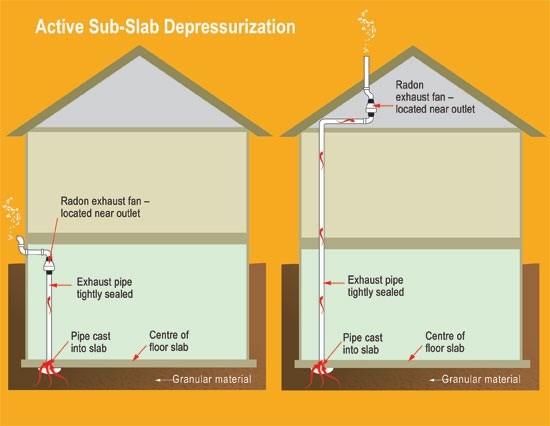TORONTO, Feb. 21, 2013 (GLOBE NEWSWIRE) -- So you've followed the advice of Health Canada and the Ontario Lung Association and tested your home for radon. The results are back and they show that your home has high levels of this dangerous radioactive gas – defined as 200 Becquerels per cubic metre (Bq/m3) or higher, the Canadian standard for indoor radon levels. Now what?
A photo accompanying this release is available at http://www.globenewswire.com/newsroom/prs/?pkgid=17276
It is important for homeowners to know that high radon levels can be fixed. The higher the level, the sooner action should be taken to lower it as much as possible. A certified radon professional can help you determine the best solution for your home.
Radon is a naturally occurring radioactive gas created from the breakdown of uranium in rocks and soil. It can get into homes and buildings through small openings in the foundation walls, floors, or pipes and drains, potentially creating dangerous levels indoors.
"Radon is colourless, odourless and potentially dangerous," said Connie Choy, Air Quality Coordinator at the Ontario Lung Association. "Long-term exposure to radon is the second leading cause of lung cancer after smoking."
Radon is linked to approximately 16 per cent of lung cancer cases, Choy said, causing the deaths of more than 3,000 Canadians every year. People who smoke and are exposed to high radon levels have a one in three risk of getting lung cancer, compared to one in 20 for non-smokers exposed to radon. Based on a recent Health Canada survey, 13 of the 36 Health Regions in Ontario had high radon levels in more than 10 per cent of homes.
According to Health Canada and certified radon professionals, the most common and effective radon reduction method is Active Soil Depressurization (ASD). ASD involves having a contractor drill a hole in the basement floor and install a vent pipe with a fan that draws the radon gas from under the house and pushes it outside. The ASD system ensures that indoor radon levels do not build up and reduces the risk of lung cancer for current and future occupants of the home.
"Most homes with high radon levels can be fixed with one day's work using a trained and certified radon mitigator", says Bob Wood, President of the Canadian Association of Radon Scientists and Technologists (CARST). "Almost all of these homes can be brought down below 100 Bq/m3", he says.
To find a certified radon professional near you, go to the Canadian National Radon Proficiency Program (C-NRPP) website at http://www.neha-nrpp.org/cnrpp.shtml or call 1-800-269-4174. The Canadian Association of Radon Scientists and Technologists (CARST) website at http://www.carst.ca/en/index.html also has information about certified radon professionals.
More information about radon is available on the Ontario Lung Association's radon website at www.on.lung.ca/radon. You can also call the toll-free Lung Health Information Line at 1-888-344-LUNG (5864) to speak to a Certified Respiratory Educator about radon or other lung health issues.
